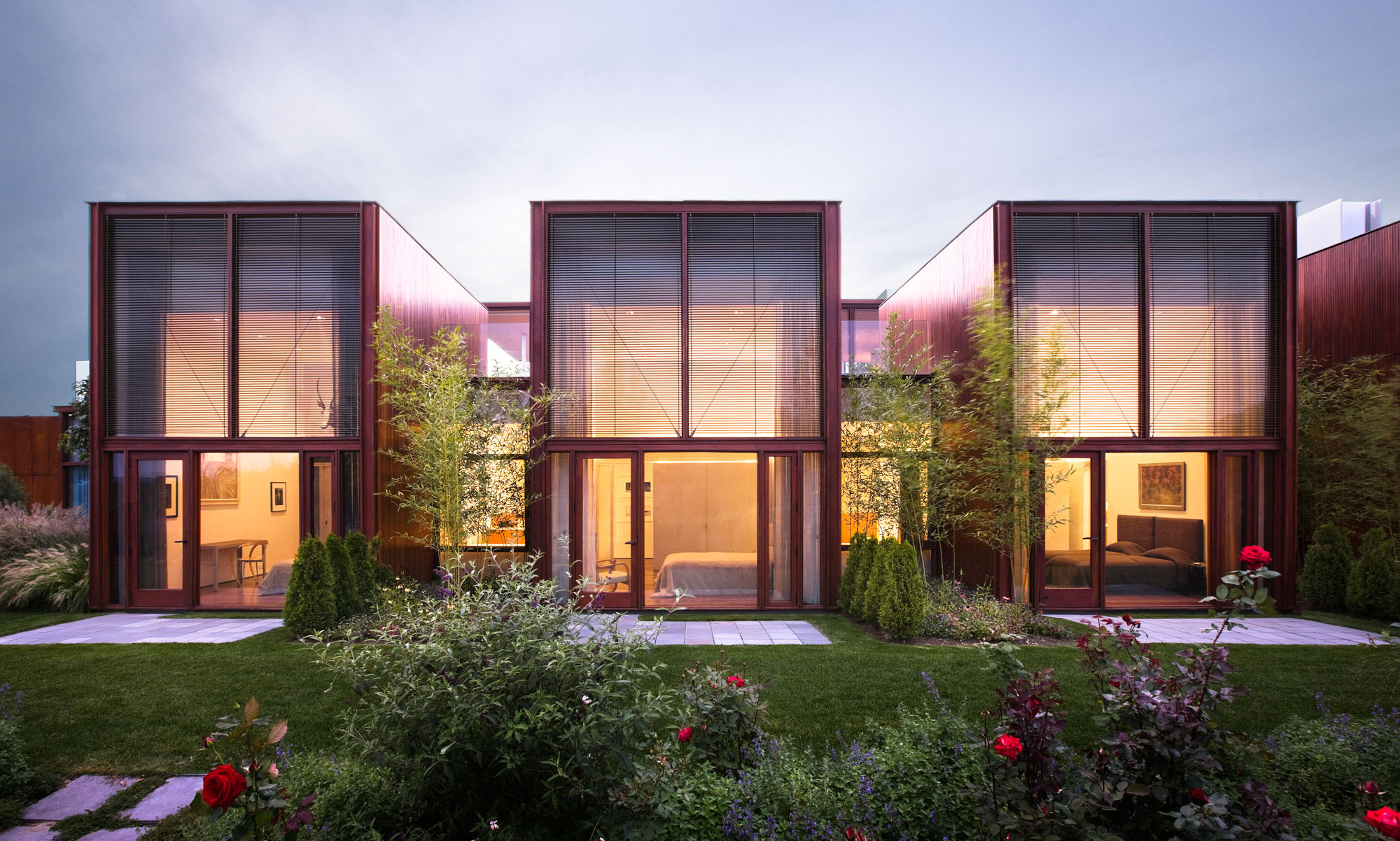Architects: Want to have your project featured? Showcase your work through Architizer and sign up for our inspirational newsletter.
A pendant light is a fixture that is suspended from the ceiling by a cord, chain or metal rod. Less bulky and often more affordable than chandeliers, pendant lighting has become a popular choice among architects across diverse typologies. In the majority of instances, pendant lights are harnessed in one of two ways — in clusters, hung in a decorative series, or as a stand-alone light fixture that serves as the focal point of a room.
While pendant lights come in a variety of shapes and sizes, all models serve a fairly similar purpose — they are sculptural and decorative, while doubling as an excellent lighting source. That said, certain design specifications will be more appropriate than others depending on the priorities that you have laid out for the ambience, appearance and energy performance of your space.
Research Pendant Lighting Manufacturers
As serious eye candy for designers, selecting pendant lighting can be thrilling and fun. It’s important to think beyond aesthetics, though. Make sure that, in addition to deciphering how you want your lighting to look, you are able to express exactly what you want it to do.
When illuminating a space, there are three different layers of light to think about: ambient or general lighting, task lighting and accent lighting. Ambient lighting is necessary in every room as it provides a comfortable level of overall visibility. Task lighting performs exactly as it sounds — it is a direct light source that helps you to perform a particular task. Used to spotlight a certain feature such as a painting or mantel, accent lighting is rarely the goal of pendants; this type of illumination is more often executed using sconces or track lighting.
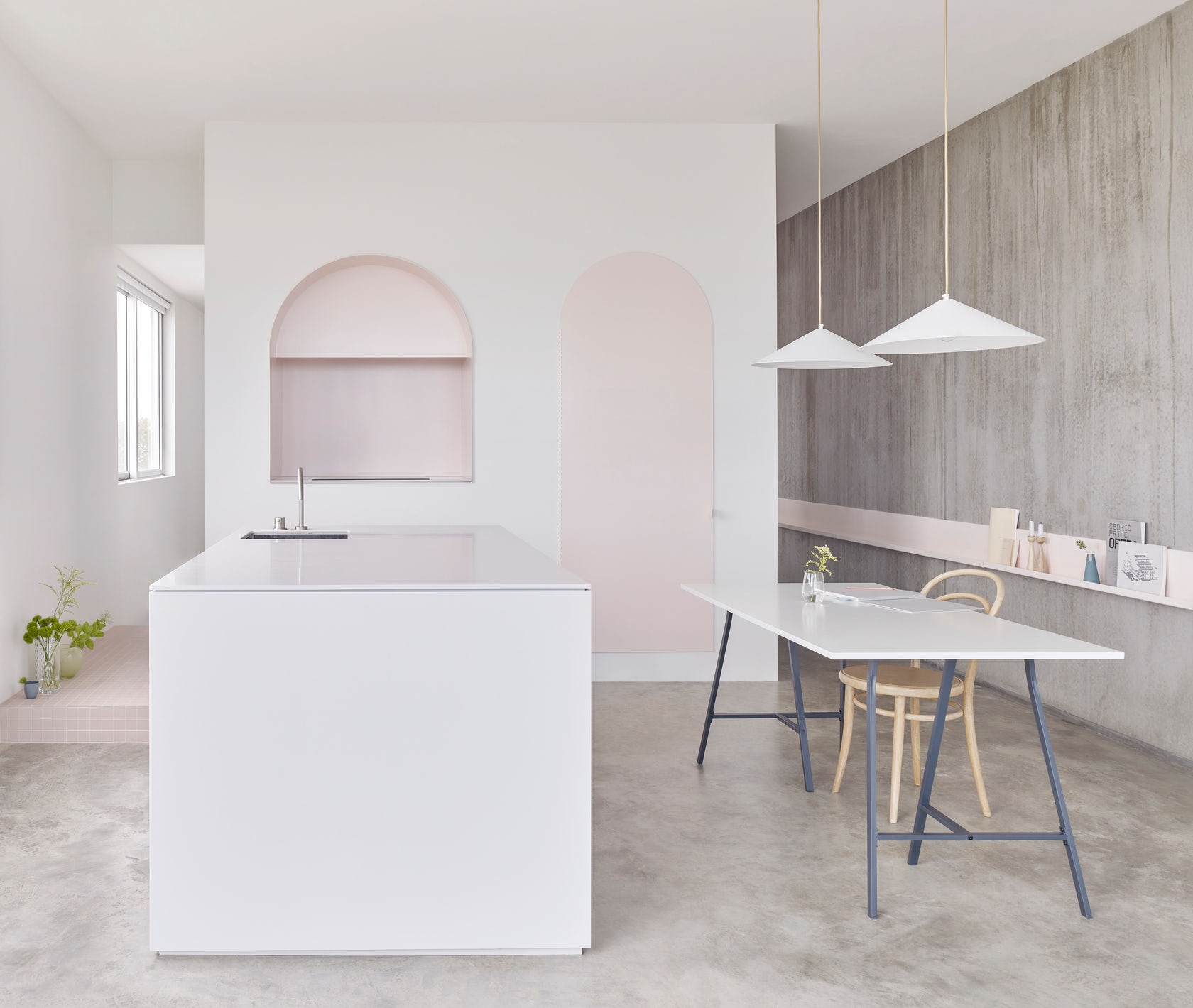
Footscray Apartment by BoardGrove Architects; Pendants by Douglas and Bec
Basic Categorization
There are many different types of pendant lights and often manufacturers will categorize them with their own set of nomenclature. However, here are some common terms to watch out for when you are searching for the most appropriate pendant for your next design.
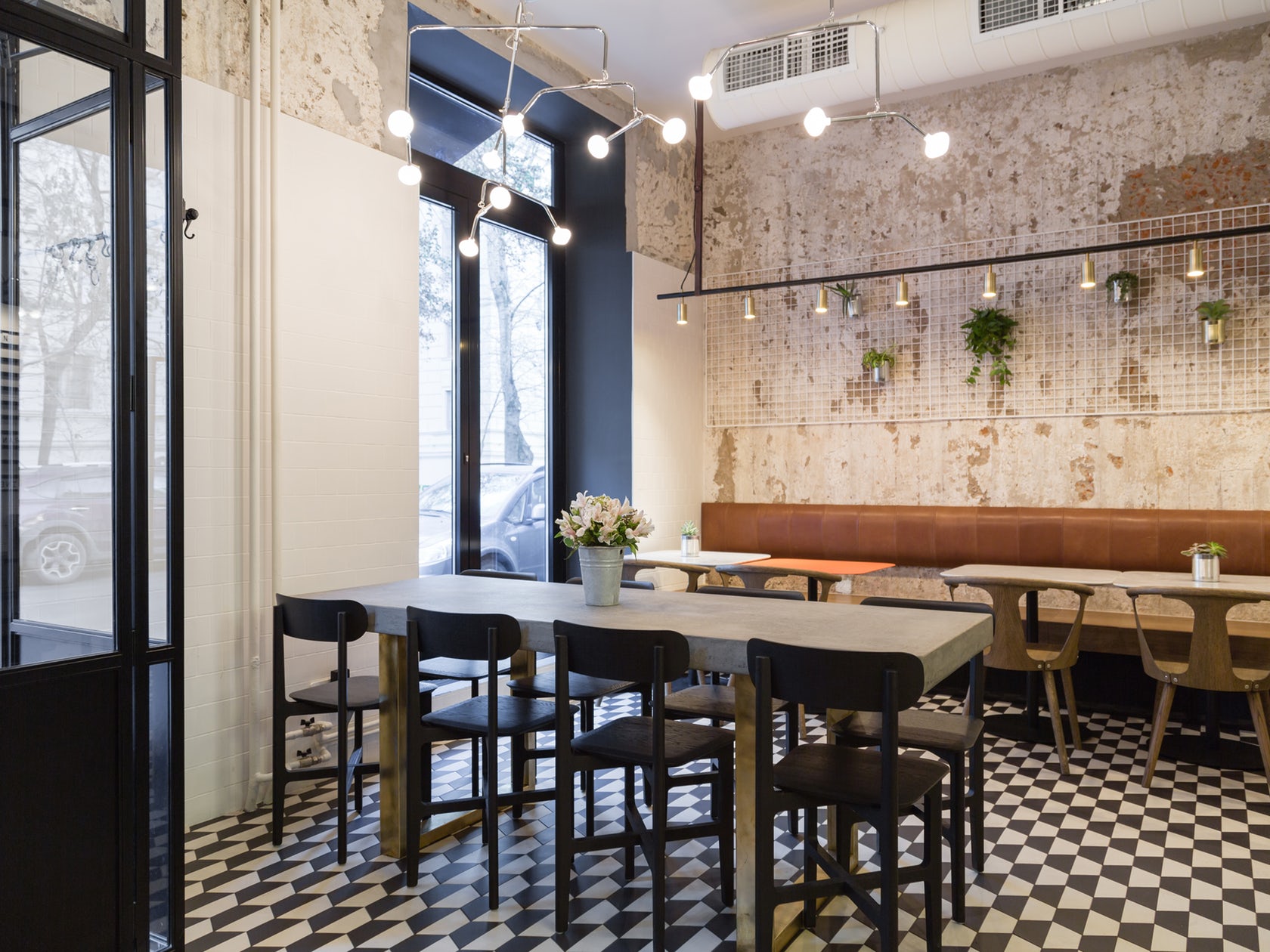
NUDE. COFFEE & WINE BAR by Form Bureau features sculptural multi-light pendants; Pendants by Rubn
Multi-Light Pendants: Sometimes referred to as cluster-pendants, multi-light pendants typically feature anywhere from two to twelve lights, which are connected to a central fixture. These models are convenient and effective in spaces that only have one overhead electrical opening. Additionally, multi-light pendants are a great choice if you are looking to emulate the look of a traditional chandelier.
Inverted Pendants: Sometimes referred to as up-light pendants, inverted pendants project light upwards towards the ceiling, which make them very suitable for general illumination or ambient lighting. An inverted pendant light functions very similarly to a semi-flush-mount light; the only difference is that it hangs down, rather than being mounted directly onto the ceiling. Popular settings for inverted pendants include dining areas and entrance hallways.
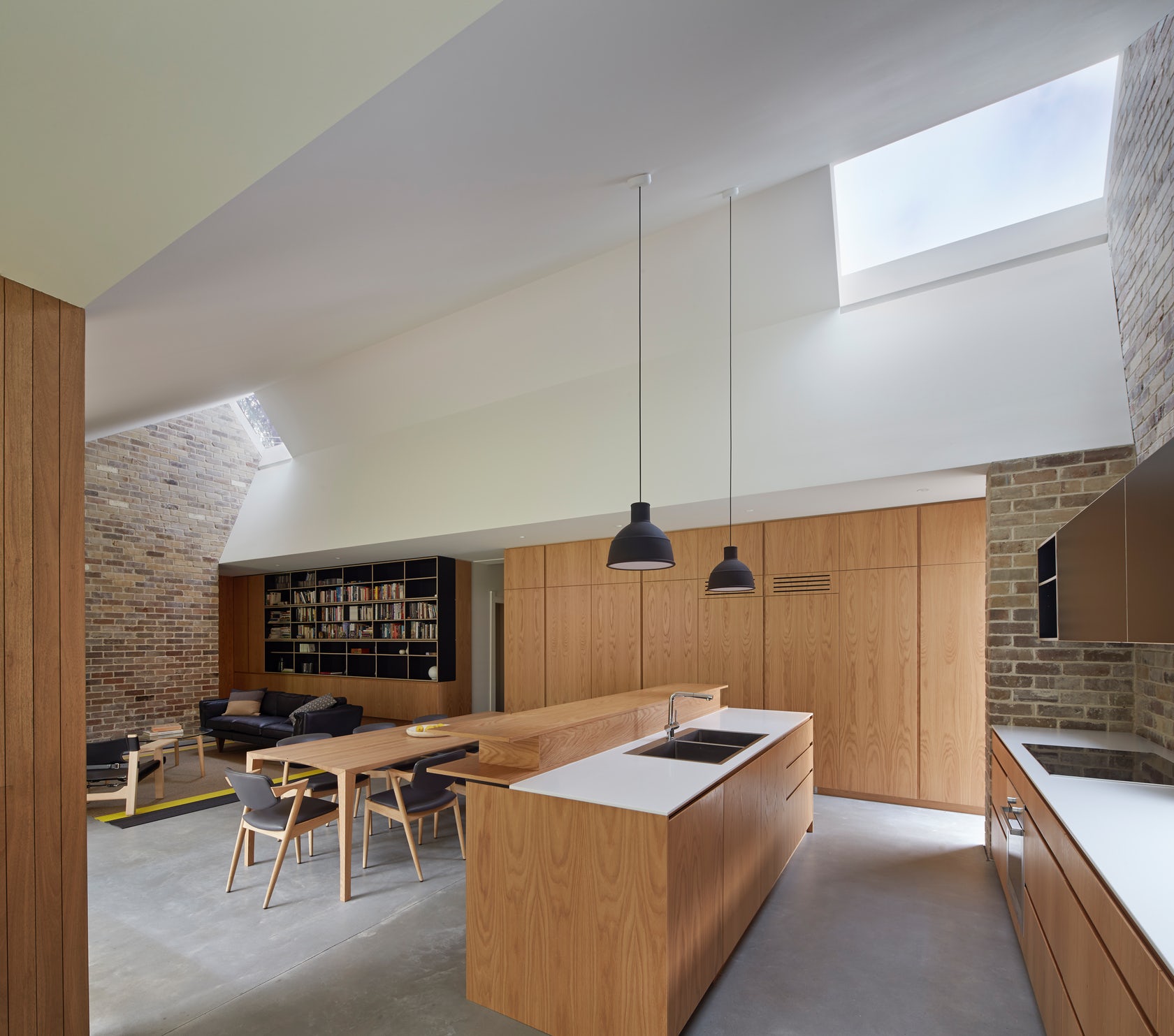
Skylight House by Andrew Burges Architects features downlight bell-shaped pendants; Pendants by Muuto
Downlight Pendants: Sometimes referred to as bell-shaped pendants, downlight pendants direct light — you guessed it — downwards. This makes them very suitable for task illumination. These lights supply intense, direct light that is best for fine-detailed work, including reading and cooking. As such, they are a common choice for illumination above kitchen islands.
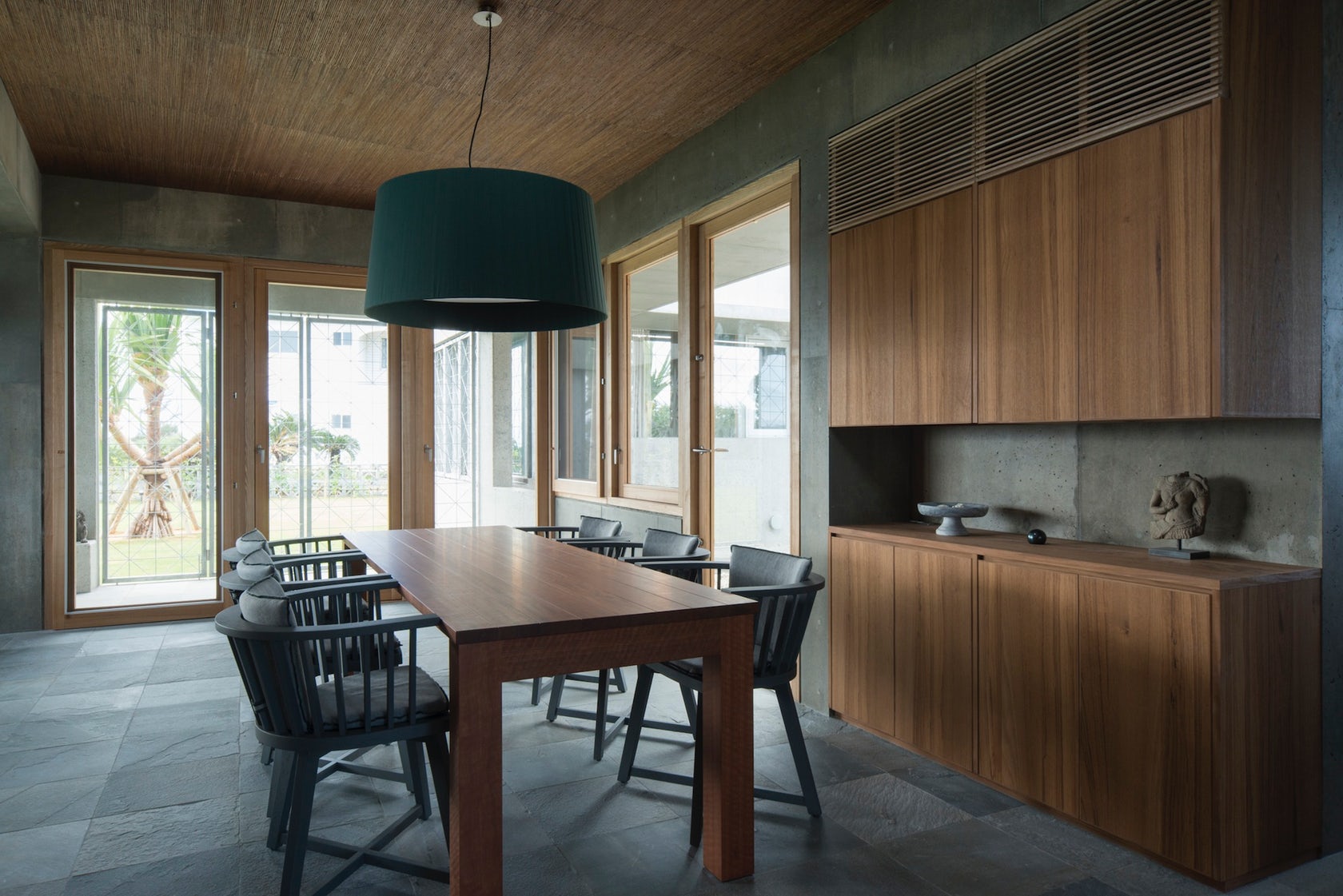
VILLA IN YORON by CASE-REAL features an emerald drum-shade pendant; Pendant by Santa & Cole
Drum-Shade Pendants: Drum-shade pendants feature a cylindrical shade-diffuser that is typically made out of malleable or hardback fabric. Fabric detailing can add a luxurious element to any space, while also allowing for endless ways to integrate custom patterns and colors.
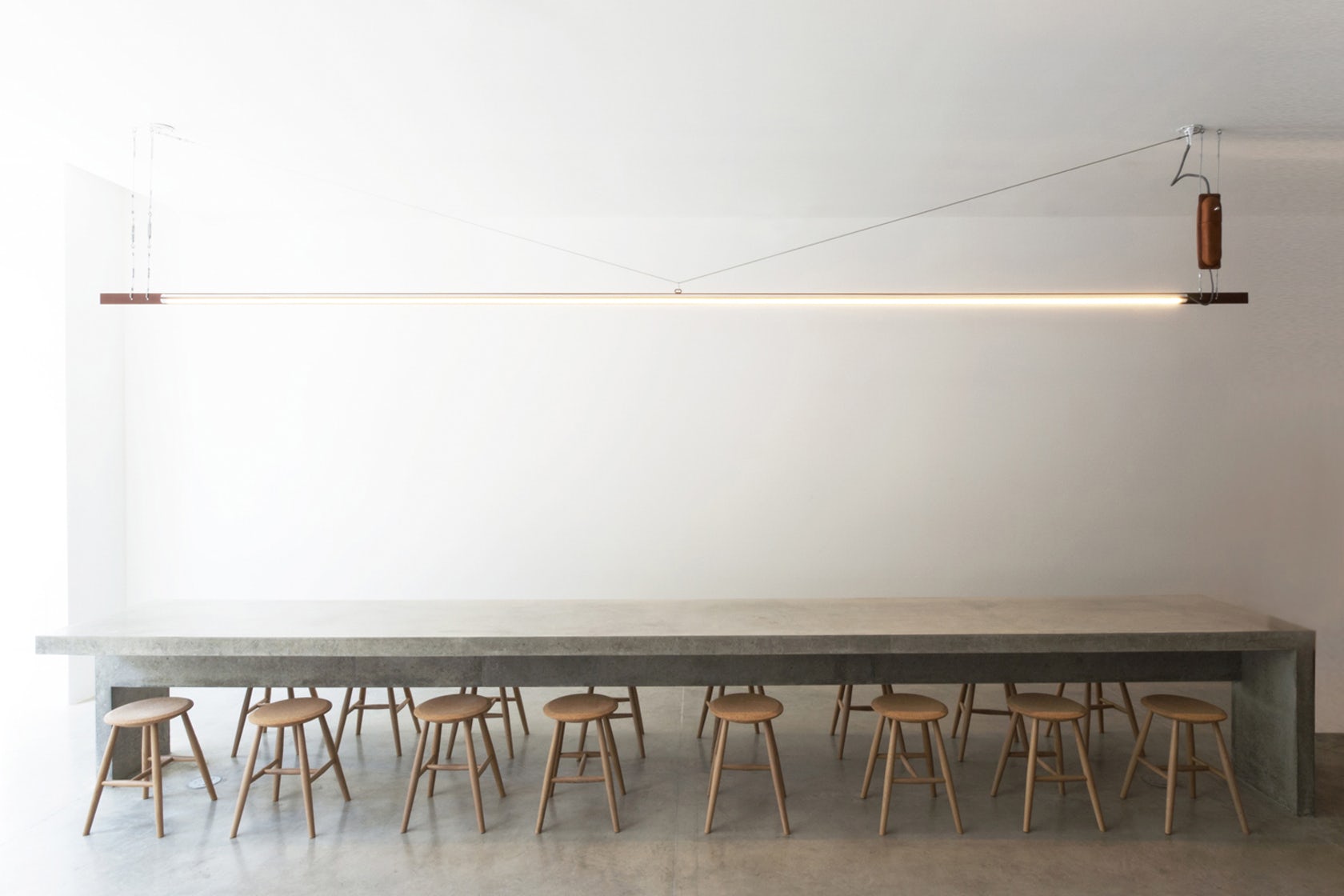
Torafuku Modern Asian Eatery by Scott & Scott Architects features a custom linear pendant by Scott Architectural Lighting
Linear Pendants: Similar to multi-light pendants, linear pendants are composed of several light sources that run along a single canopy. Some manufacturers, including Rich Brilliant Willing, design and manufacture linear pendants that can be flexibly oriented to support either inverted or downward illumination. One example is the Queue Double Section linear LED pendant system.

Karma HQ by FormNation features Delta pendants by Rich Brilliant Willing. The hybrid shade combines traditional box pleats with tapered openings.
Performance
Plug-In: Plug-in pendant lights are easy to install and are much less labor intensive than hardwired pendant lights. The downside of plug-in pendant lights is that they required longer cords, which means that in some cases, you may even have extension cords visible within your design.
Hardwired: Since there are no dangling cords or visible plugs, hardwired pendant lighting offers a much cleaner and more polished look, and thus function as more permanent lighting fixtures. However, they are much more labor intensive than plug-in pendant lights. If you are interested in hardwired pendants, make sure to talk to manufacturers early on in the execution of your project.
Retractable Cord: Some pendant lights are made available with retractable cords, which means that they can be easily adjusted to suit various tasks and settings. Depending on the context of your design, this may offer an additional element of flexibility.
Light Bulbs: Lighting accounts for 15% of an average American household’s electricity usage. As a result, it is extremely important to think about how you will leverage your lighting choices, in order to ensure sustainability. There are many different types of light bulbs on the market to fit pendant lighting, including compact fluorescent, halogen, incandescent, LED, xenon and neon. While each of these types can be found in endless shapes and sizes, they are often differentiated by their energy efficiency, as well as the quality of light that they emit.
Historically, compact fluorescents (CFLs) and LEDs have been considered some of the most energy efficient light bulbs on the market, as they have a lower wattage while providing the same light output as higher wattage incandescent light bulbs. In 2017, however, new US regulations have been put in place that make it difficult for CFLs to qualify for an ENERGY STAR rating. As a result, some manufacturers are already phasing out CFLs in favor of LEDs.
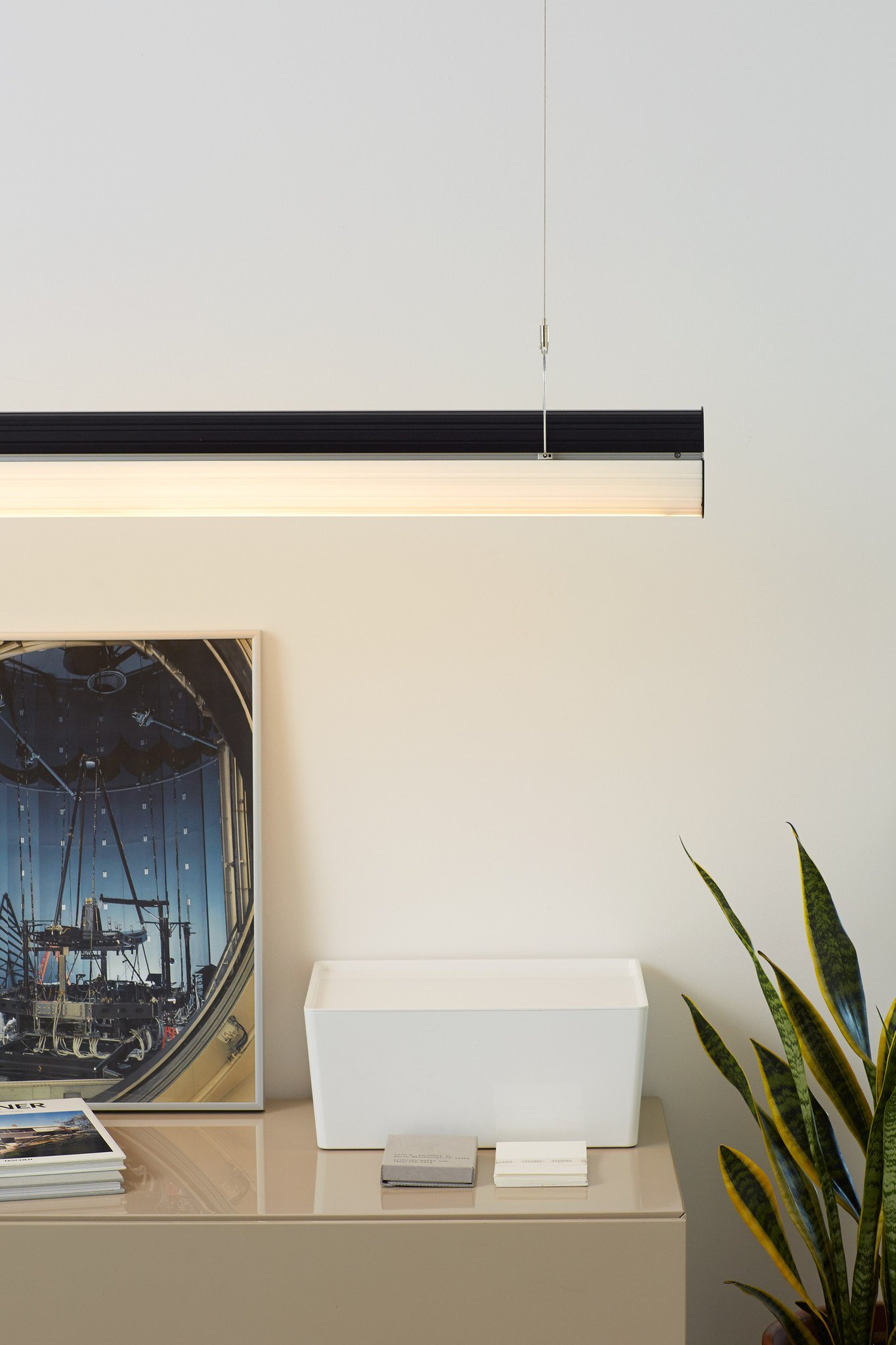
Queue Pendant by Rich Brilliant Willing is a 100% LED linear pendant fixture; image via Rich Brilliant Willing
Before getting too attached to any single pendant fixture, it is absolutely essential to determine the type of light bulbs that you intend on integrating. Some manufacturers, including Rich Brilliant Willing, design and manufacture pendant lighting that is only available with LED bulbs, and many others manufacturers are beginning to follow suit. Although they are typically more expensive, LED bulbs last 25 times longer and use at least 75% less electricity than incandescent bulbs. LED light bulbs are also cool to the touch, which makes them appropriate in environments where general safety is a concern.
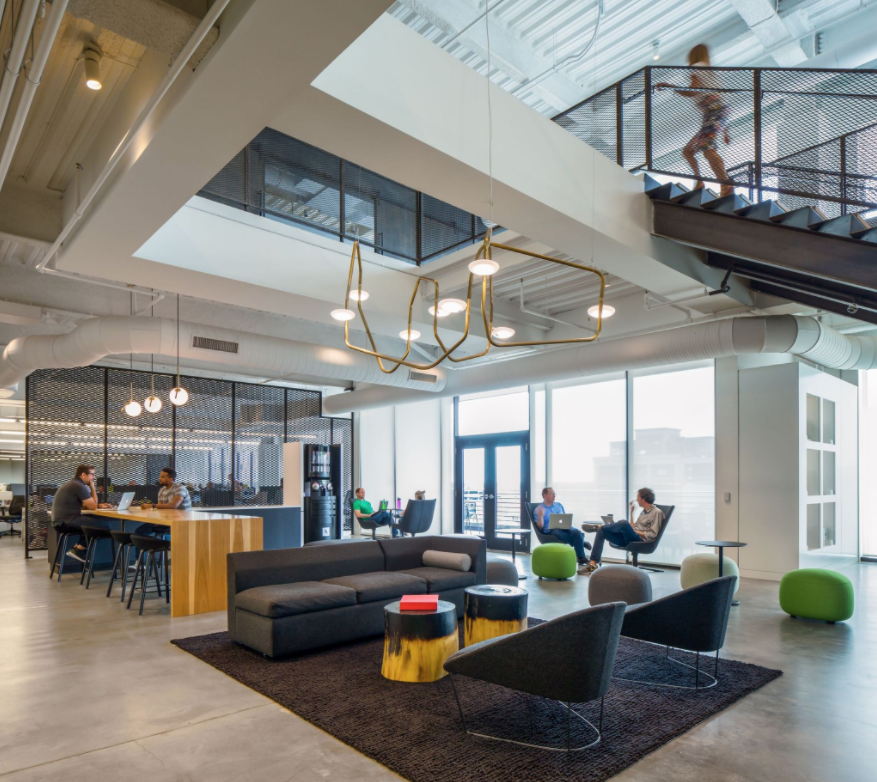
Resource/Ammirati’s headquarters in downtown Columbus features Palindrome — a multi-light pendant by Rich Brilliant Willing; image via Rich Brilliant Willing by Sean Airhart
Wattage: Wattage indicate the amount of energy that a light bulb uses. A lower wattage indicates a lower energy usage; a higher wattage indicates a higher energy usage. As previously mentioned, LEDs have a lower wattage than incandescent bulbs, but emit the same light output, which is one of the reasons why they are such a fantastic choice. For residential and indoor commercial use, average wattage levels range anywhere between 45W and 150W for incandescent light bulbs and only 6W and 20W for LED light bulbs. Never exceed the maximum wattage recommended for a light fixture.
Lumens: Lumens measure the amount of light that is emitted from a bulb, and are thus the most important measurement to look at, especially when you are planning on integrating CFL or LED light bulbs into your design. Higher lumens indicate a brighter light; fewer lumens indicate a dimmer light.
As a rule of thumb, a 60W incandescent bulb produces approximately 800 lumens, a 75W incandescent bulb produces approximately 1100 lumens and a standard 100W incandescent bulb produces approximately 1600 lumens. With LED light bulbs, however, you will require a mere 8-12W light bulb to achieve 800 lumens and a 16-20W light bulb to achieve 1600 lumens. In fact, a 60W LED light bulb would be unbearably, even painfully bright on one’s eyes.
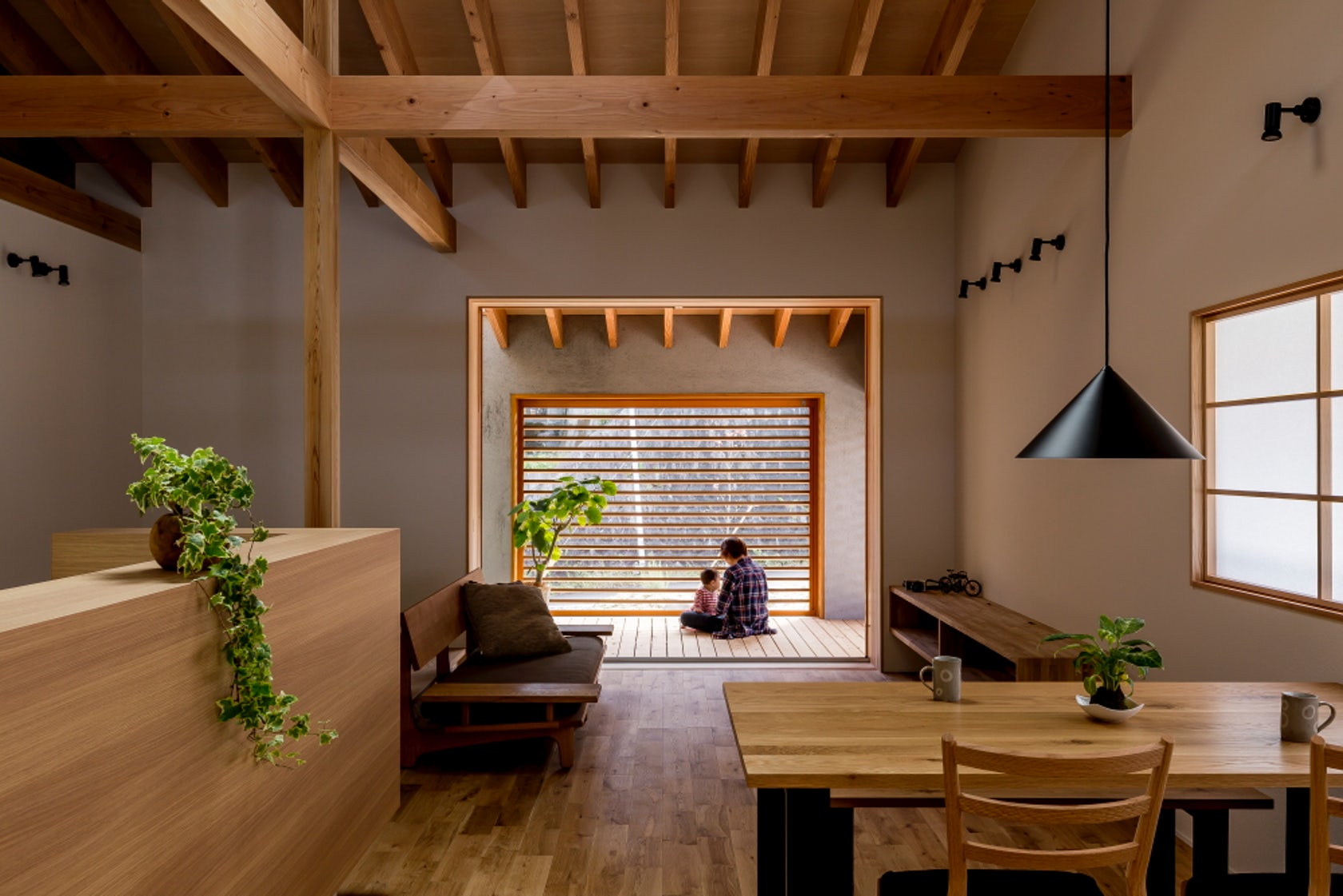
Kojyogaoka House by HEARTH ARCHITECTS features a matte black downlight pendant
K-Value: Kelvin is a unit of measurement that is used to describe the hue of a specific light source. The higher the K-value, the cooler or more blue the light; the lower the K-value, the warmer or more yellow the light.
Control Functions: Beyond a typical on and off switch, pendant lighting can be paired with a dimmer or a motion sensor, which help save electricity when full illumination is not required in a space. Talk to your manufacturer about the various options that are available for controlling and customizing your daily lighting.
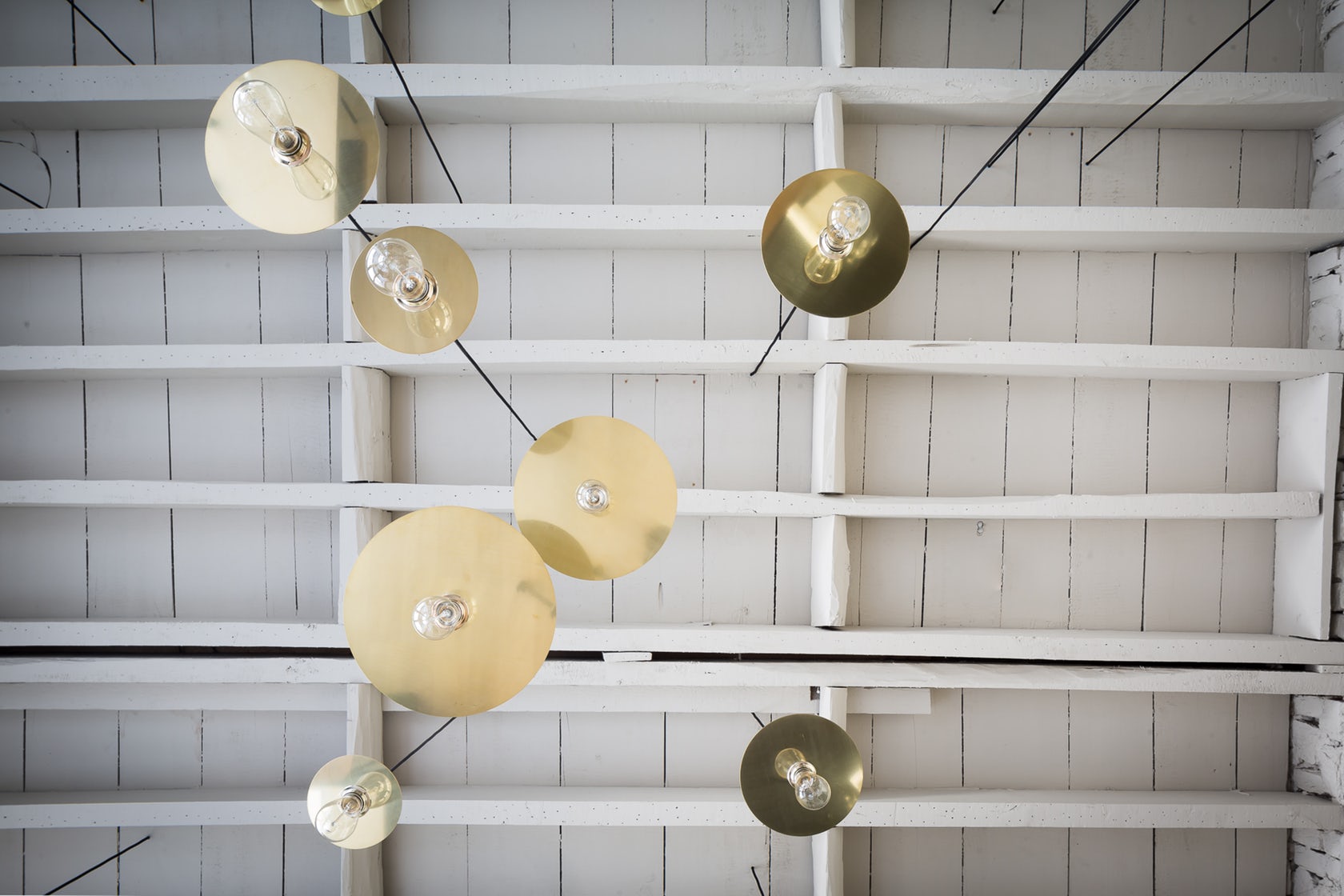
ogst by Architectslab features several mini-pendants
Aesthetics
Like many architectural building products, the aesthetic of pendant lighting is closely linked to its performance features. That said, in this section you will discover additional aesthetic components that have not already been mentioned in previous sections of this article.
Shade Materials: Whether you are looking for a light that emanates a warm, soft glow or one that casts a dramatic light, selecting the right shade will help you control these details. The most common shading materials for pendant lights include glass, metal and plastic, however, other options include fabric, wood and stone. Clear glass naturally diffuses light in all directions, and is thus a great solution for areas that must be well-lit, like bathrooms and kitchens. Metals with shiny, reflective finishes, such as polished chrome or brushed nickel, can help create more dramatic light. Plastic is typically the cheapest option on the market, however the material is prone to discoloration and wear over time.
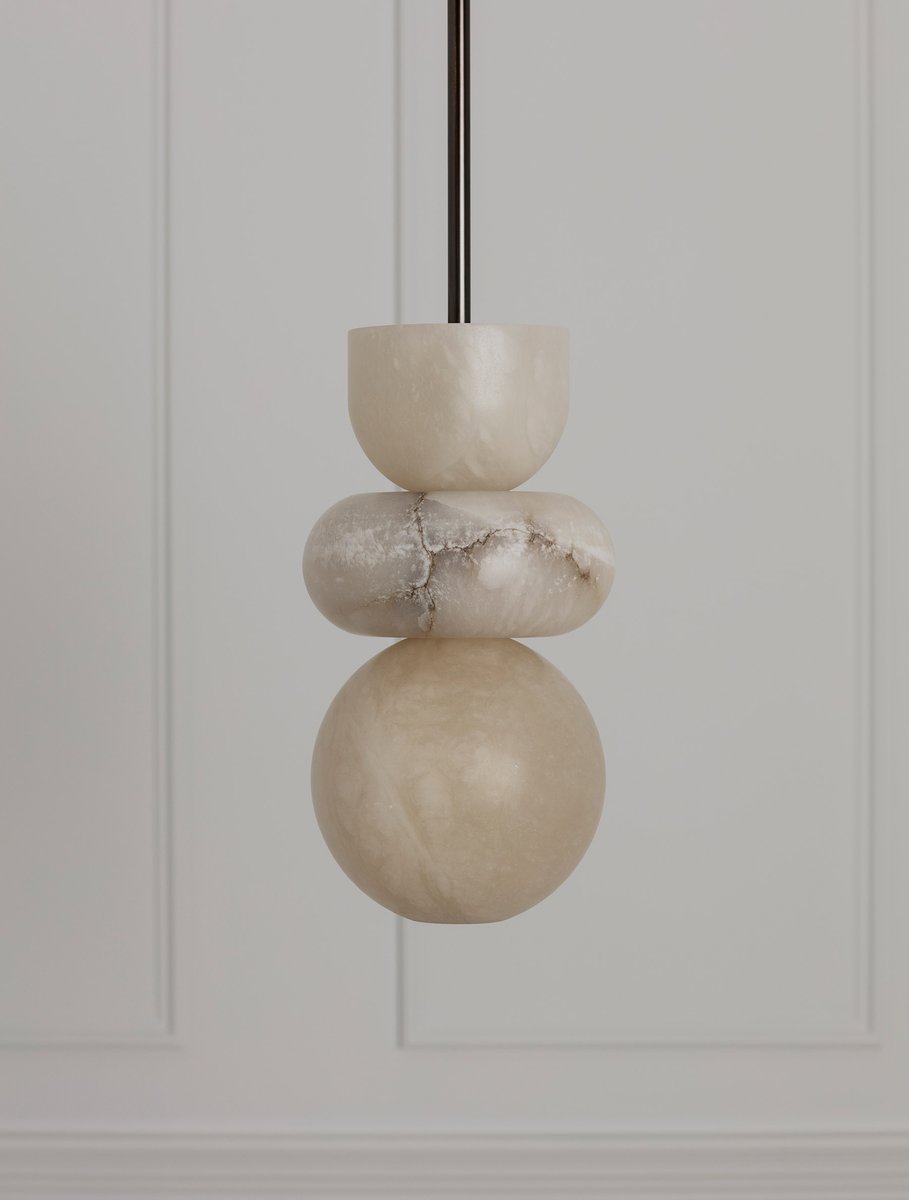
Alabaster Totem 3 by Allied Maker is designed to showcase the magical translucency of stone; image via Allied Maker
Size: Typically, pendant lights range anywhere from 5-inches to 43-inches wide. A large, single pendant is suitable in instances where you desire a focal point and an intense, concentrated light source. Large pendants are both common and function well above round dining tables and in the center of an entrance hallway. As displayed in the various office projects throughout this article, several small pendants, such as mini-globes, are great alternatives to track lighting. With the ability to direct light in multiple directions, small pendants work well as individual task lighting in vast spaces.
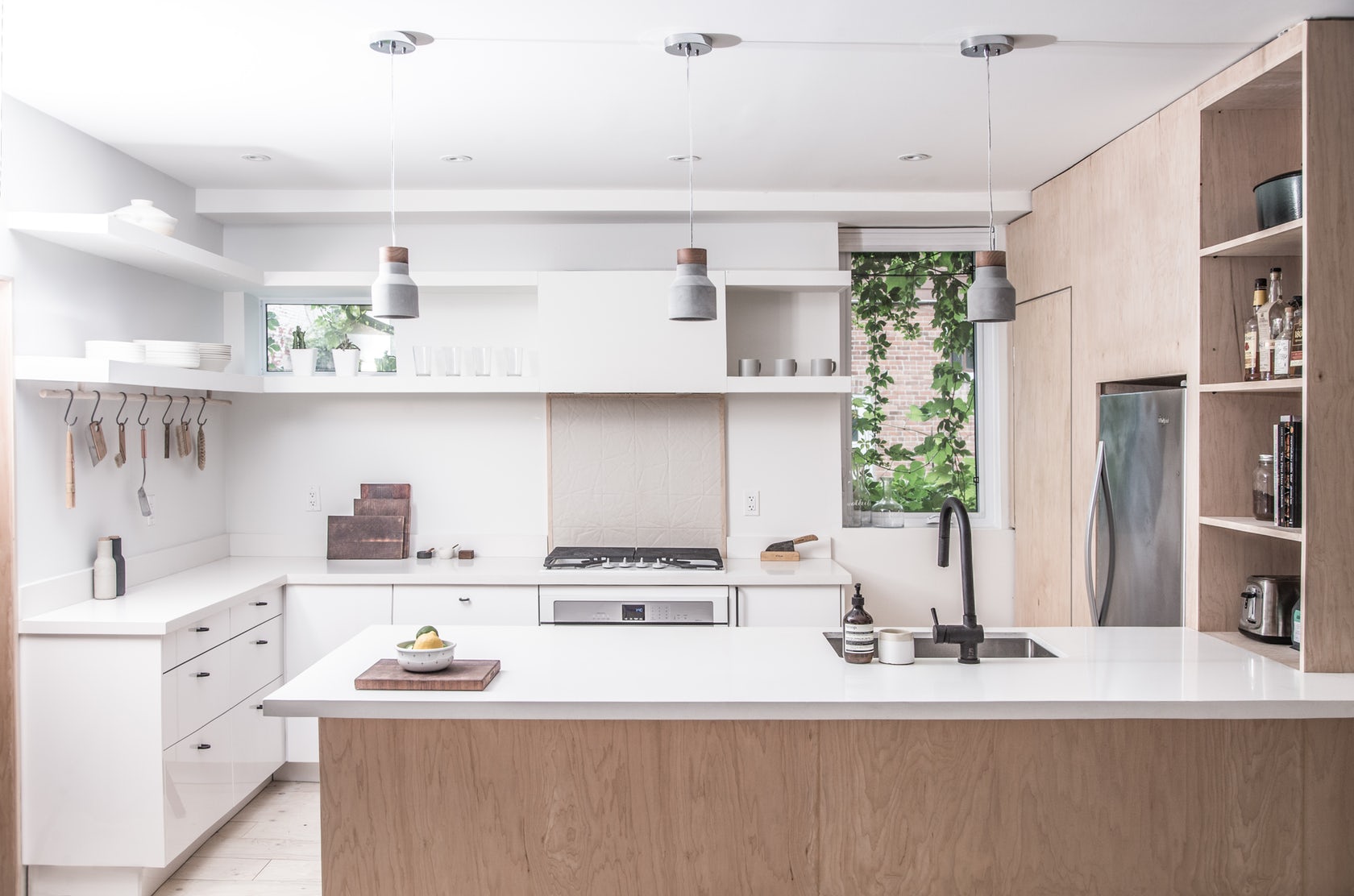
Sheridan Residence by Studio AC features three mini-pendants that provide task lighting over the kitchen island
Height: As pendant fixtures vary immensely in height, selecting the right one will depend on the context, function and aesthetic preferences of your project lighting. Generally, pendants hang no lower than 7-feet from the floor and 30-inches from the top of a work surface. With hardwired pendants, you will likely require a cord that is at least 4 to 6-feet long and with plug-in pendants, a cord that is at least 9-feet long.
Before selecting pendant lighting and its associated hardware, think about how tall the ceilings are in your space and determine how high or low you would like the pendant to hang, above the floor or a work surface.
Case Studies
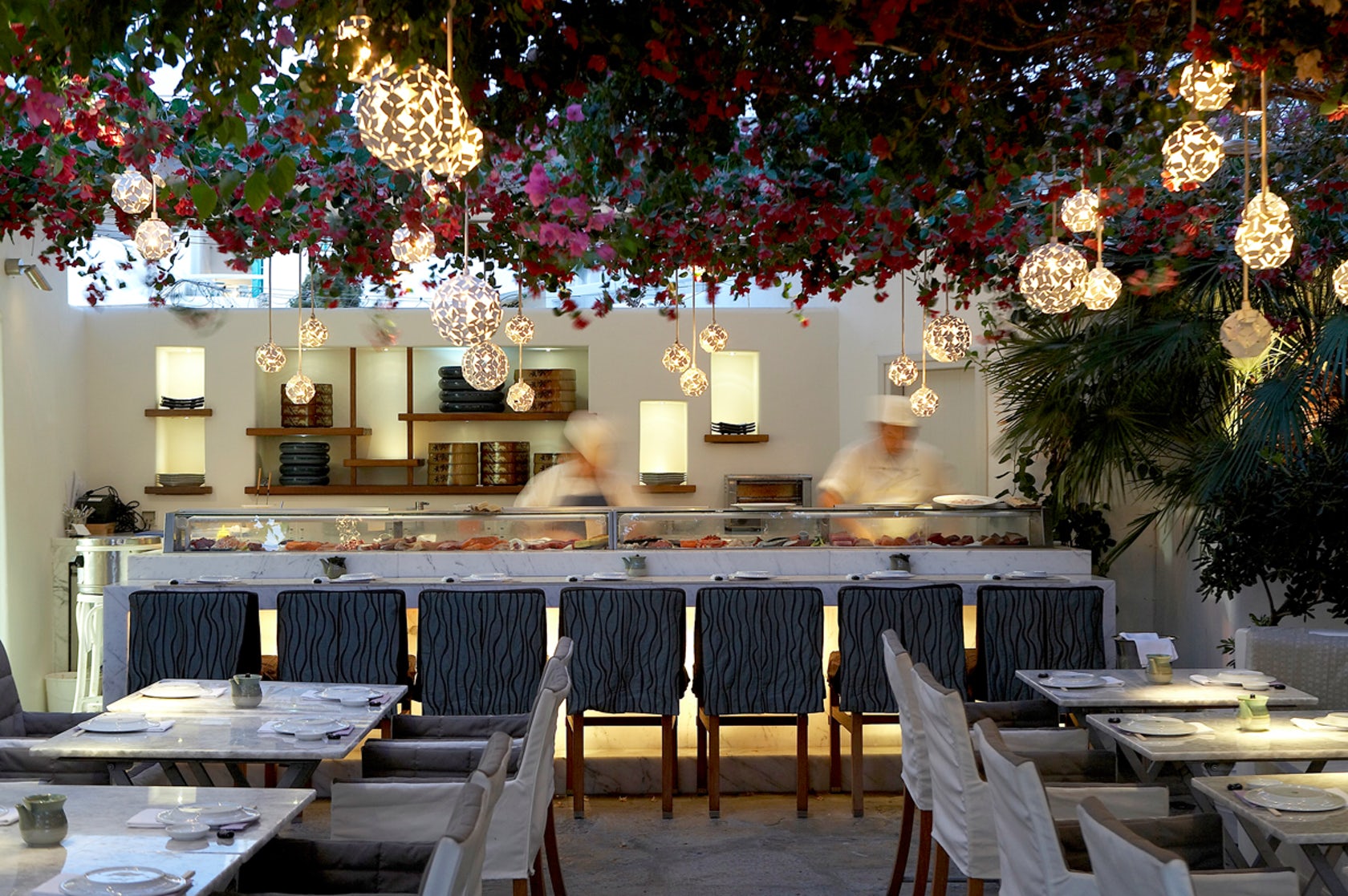
Belvedere Hotel by Rockwell Group; Pendant lights by Johnson Light Studio and Terzani Magdalena Pendants
Let it Glow: Detailing Perfect Pendant Lights
Pendants can be hung in a straight line over kitchen countertops and dinette sets. Since they are typically smaller, it’s important to carefully consider how many you need to adequately light your project. The following collection shows different pendant lights and a variety of ways that they can be used within a space.
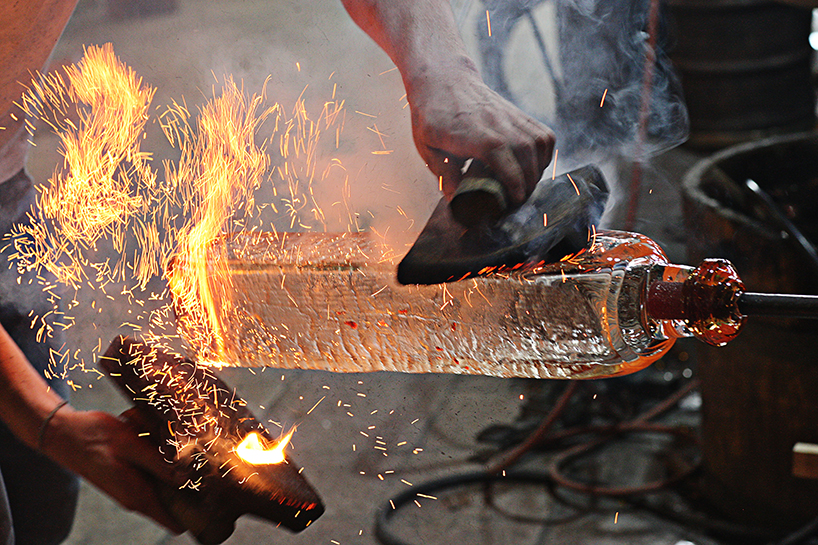
Yakisugi by Kengo Kuma; Manufactured by Lasvit
Bright Ideas: 8 Brilliant Pendant Lights Designed by Architects
Much like architecture, the design of a light fixture calls for a perfect harmony of aesthetics, construction and technical performance. However, it also frees architects to work at a level of detail that is often impossible in architecture, allowing them to decide on everything from the shape of the fixture to the location of each screw. The resulting designs are works of art in their own right, illuminated sculptures ready for mass production.
Research Pendant Lighting Manufacturers
Architects: Want to have your project featured? Showcase your work through Architizer and sign up for our inspirational newsletter.
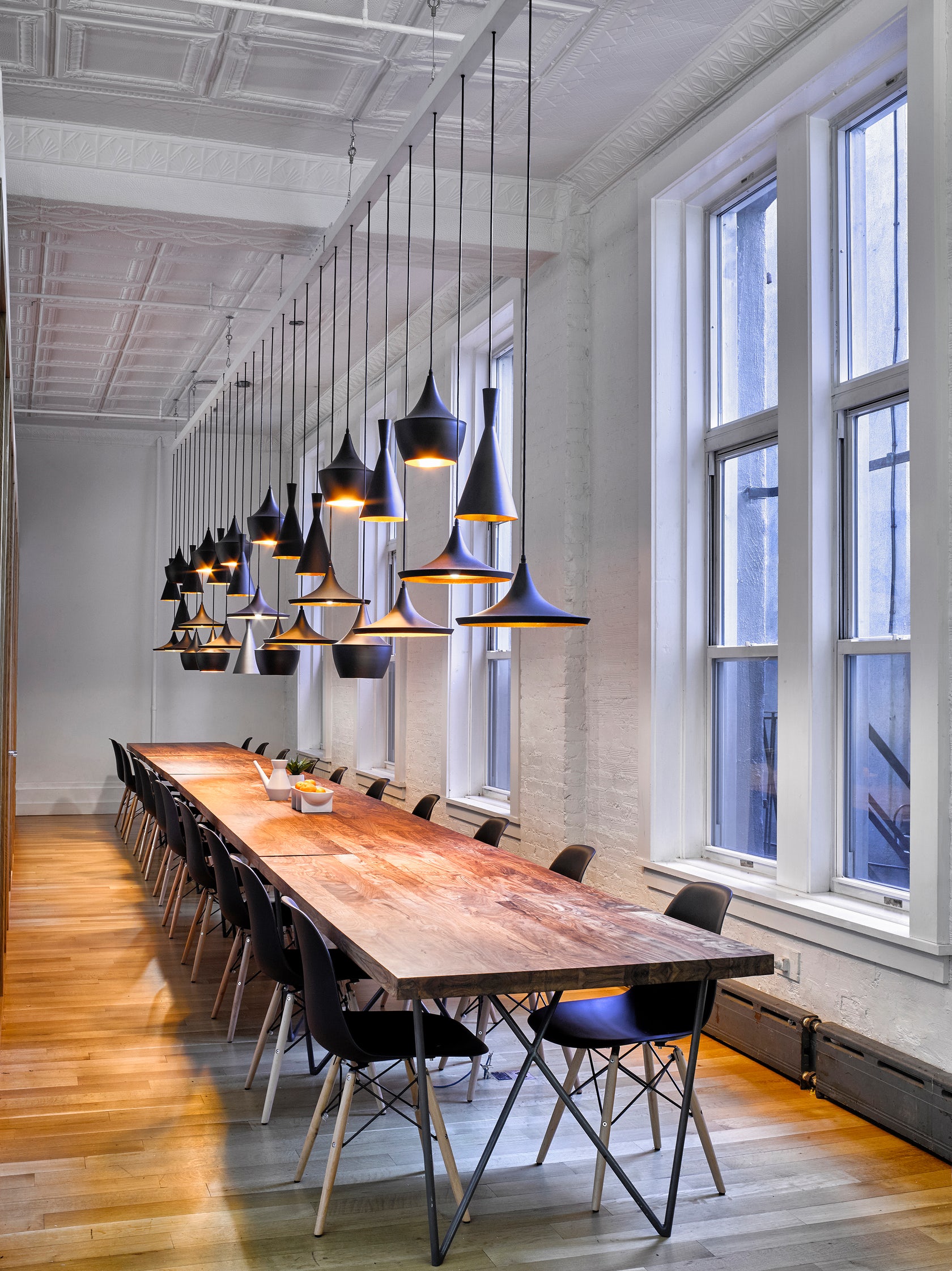
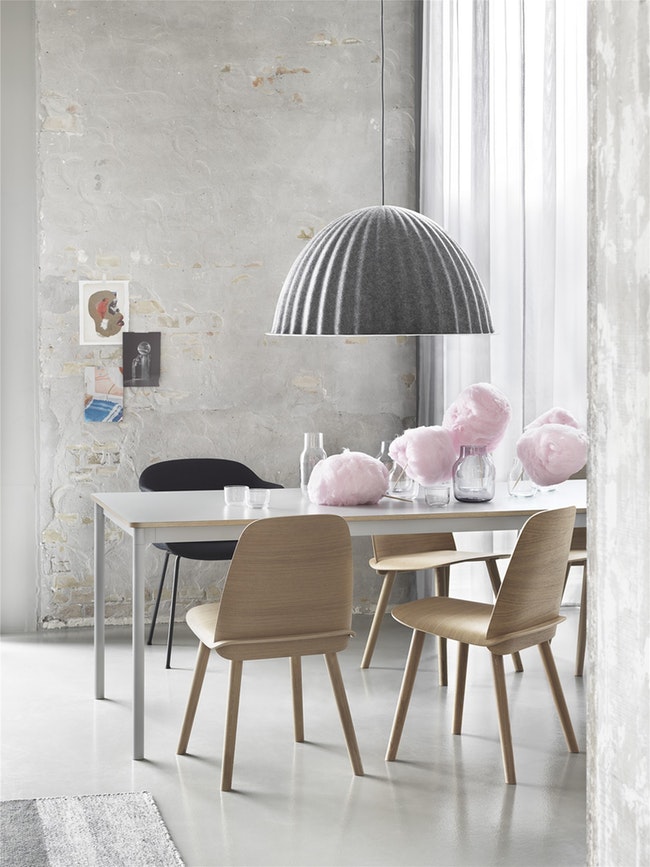
 Torafuku Modern Asian Eatery
Torafuku Modern Asian Eatery  Zen Barn
Zen Barn 